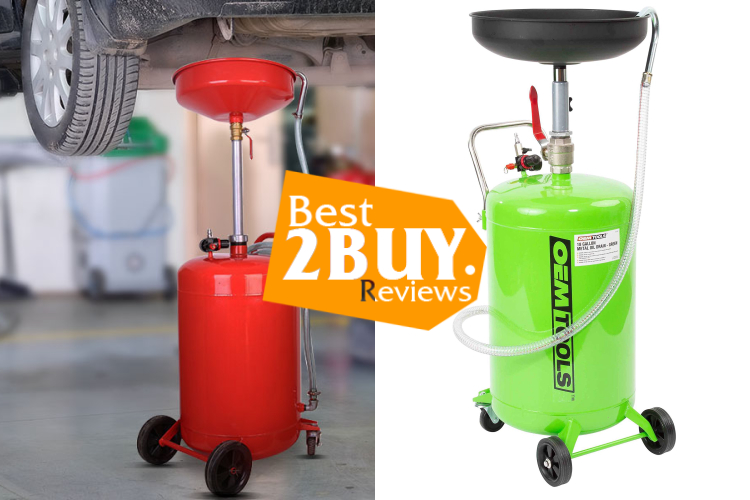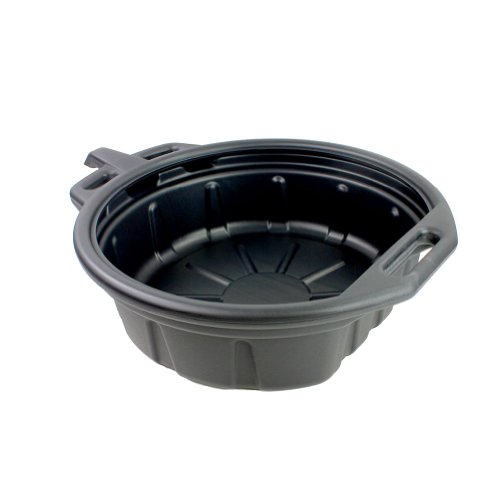Everything You Need To Know About Oil Drains

- 1. Everything You Need To Know About Oil Drains
- 1.1. The Importance of Oil Drains
- 1.1.1. Environmental Impact
- 1.1.2. Equipment Longevity
- 1.1.3. Compliance with Regulations
- 1.2. Types of Oil Drains
- 1.2.1. Gravity Drains
- 1.2.2. Pressurized Drains
- 1.2.3. Mobile Oil Drains
- 1.2.4. Oil Drain Pans
- 1.3. Factors To Consider When Choosing An Oil Drain
- 1.3.1. Capacity
- 1.3.2. Ease of Use
- 1.3.3. Portability
- 1.3.4. Oil Drain Valve
- 1.3.5. Height and Design
- 1.3.6. Built-in Filtration
- 1.4. Best Practices for Using Oil Drains
- 1.1. The Importance of Oil Drains
Oil drains are essential for ensuring the efficiency and durability of machinery and vehicles, as they enable the appropriate disposal of used oil. Whether in automotive shops, industrial facilities, or home garages, employing oil drains responsibly is vital for the environmentally friendly management of used oil. This piece delves into the importance of oil drains, the various types available, and the optimal practices for their utilization.
The Importance of Oil Drains
Environmental Impact
Proper disposal of used oil is vital to prevent environmental contamination. Oil drains provide a controlled and contained method for collecting and transferring used oil to recycling facilities, ensuring that it doesn't end up polluting soil, water, or air.
Equipment Longevity
Regular oil changes are essential for maintaining the health of engines and machinery. Oil drains make this process more efficient, allowing for the easy removal of used oil, which, if left unchanged, can lead to increased friction, heat, and accelerated wear on critical components.
Compliance with Regulations
Many regions have strict regulations regarding the disposal of used oil. Employing proper oil drains helps businesses and individuals adhere to environmental standards and avoid legal consequences associated with improper disposal.
Types of Oil Drains
Gravity Drains
One of the most straightforward and cost-effective methods is the use of gravity drains. This technique relies on the natural force of gravity to facilitate the drainage of oil from the engine into a collection container. Gravity drains are commonly employed in smaller automotive shops, where the scale of operations allows for a simpler approach. These drains are suitable for low-volume oil changes and are characterized by their simplicity and efficiency.
Pressurized Drains
In more industrial settings, pressurized oil drains come into play. This method involves the use of a pump to forcefully expel used oil from machinery. The pressurized approach offers a faster and more efficient oil change process, making it an ideal choice for high-volume oil changes in large equipment. This method is particularly beneficial in scenarios where time is of the essence, ensuring a swift turnaround in the maintenance process.
Mobile Oil Drains
Flexibility and portability are the hallmarks of mobile oil drains. Equipped with wheels or casters, these drains can be easily moved between different workstations or locations. This mobility is particularly advantageous in dynamic work environments where oil drains need to adapt to changing needs. Mobile oil drains are versatile and find applications in various industries, providing a convenient solution for efficient oil changes.
Oil Drain Pans
For smaller-scale operations, such as home garages, oil drain pans are a practical choice. These smaller, more compact containers can be conveniently placed directly under the vehicle or machinery during an oil change. Oil drain pans are suitable for occasional use, offering a convenient and manageable solution for those who perform oil changes infrequently. They are easy to store and handle, making them a popular choice for DIY enthusiasts and smaller maintenance tasks.
Factors To Consider When Choosing An Oil Drain
Choosing the right oil drain for your vehicle is an important decision that can impact the efficiency and cleanliness of your oil change process. Here are some considerations to keep in mind when selecting an oil drain:
Capacity
Oil drains come in various capacities, so it's essential to choose one that can handle the volume of oil your vehicle's engine requires. Consider the oil capacity of your vehicle and select a drain that can accommodate at least that amount. It's advisable to choose a slightly larger capacity to account for any variations in oil levels.
Ease of Use
Look for oil drains that are designed for ease of use. Features such as a built-in funnel, anti-splash lip, and a wide drain pan can simplify the oil-changing process, minimizing the risk of spills and mess. Additionally, choose a drain with smooth-rolling wheels or handles for easy maneuverability.
Portability
Portability is a significant consideration, especially if you plan to change your oil in different locations. Opt for a drain with built-in handles or wheels for convenient transportation. Some drains even come with a storage compartment for tools, making them highly portable and practical for on-the-go maintenance.
Oil Drain Valve
Some oil drains come equipped with a convenient oil drain valve. This feature allows for easy and mess-free oil disposal. Simply open the valve, drain the oil, and close it securely. This minimizes the need for lifting and pouring, reducing the chances of spills and accidents during the oil-changing process.
Height and Design
Consider the height and design of the oil drain in relation to your vehicle. A drain with an appropriate height can facilitate efficient oil drainage. The design should also allow for easy positioning under the vehicle, ensuring that the drain can reach the oil pan without any difficulties.
Built-in Filtration
Some advanced oil drains come with built-in filtration systems to catch debris and contaminants during the oil change. This can contribute to a cleaner and more effective oil-changing process, promoting better engine health over time.
Best Practices for Using Oil Drains
- Regular Maintenance: Oil drains, like any equipment, require regular inspection and maintenance. This ensures that they function properly and remain free from leaks or damage that could lead to environmental hazards.
- Proper Containment: Always use oil drains with proper containment features to prevent spills. Additionally, having spill response kits nearby is advisable for quickly addressing any accidental spills during the oil change process.
- Training and Education: Proper training of personnel on the correct use of oil drains is crucial. This includes understanding the type of oil drain to be used, the capacity it can handle, and the proper disposal methods for the collected oil.
- Recycling and Disposal: Used oil should be recycled whenever possible. Establish a relationship with a certified recycling facility for the responsible disposal of used oil, promoting environmental sustainability.
In conclusion, oil drains are indispensable tools in the maintenance of vehicles and machinery. Understanding their importance, types, and best practices for use is crucial for promoting environmental responsibility and ensuring the longevity of equipment. By incorporating proper oil change procedures and utilizing suitable oil drains, individuals and businesses contribute to a cleaner and more sustainable future.











